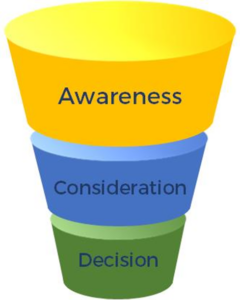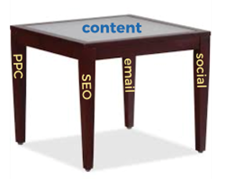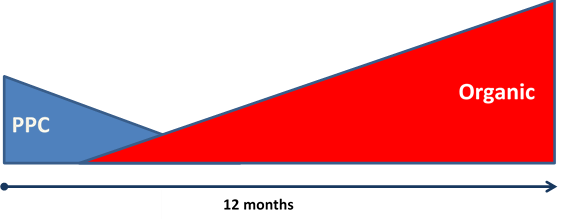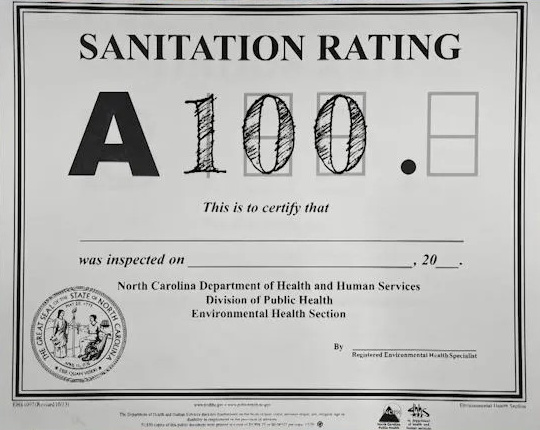What is Interruption Marketing?
We rarely welcome interruptions, especially from a spammy email or pop-up ad. So it’s no wonder then, that all marketing tends to get lumped into an arena of disdain. But what if it’s possible that there’s a form of marketing we do appreciate? What if we discover something useful in our quest for a solution to an everyday problem that we didn’t know existed, or that we needed, until it appeared on our screen? That search query is a form of inbound marketing. In simpler terms:
Interruption (outbound) marketing pushes your offering to your prospects.
Inbound marketing pulls your prospects to you.
Inbound Marketing, defined by HubSpot, is “a business methodology that attracts customers by creating valuable content and experiences tailored to them. While outbound marketing interrupts your audience with content they don’t always want, inbound marketing forms connections they are looking for and solves problems they already have.”
Inbound methods allow you to build trust with high-quality leads who demonstrate an active interest in your product or service.
This is particularly important if your business has a relatively long sales cycle. If your prospects generally take their time to research different offerings and weigh the pros and cons of each, building brand awareness and trust is big.
Seth Godin calls inbound “permission-based marketing” because rather than pushing your message in front of your audience, likely interrupting them with an unwelcome pitch, your prospect is finding your content and signing up for more.

Awareness – letting people know you exist
Consideration – getting them interested in your offering
Decision – compelling them to take action
Let’s make it official by using acronyms. Here’s the lingo often used by digital marketers.
Top of Funnel — TOFU — (Awareness Stage) These first-time website visitors found your page via SEO strategies, ads, social posts, etc. because the title or keywords have ranked your page high enough in the SERPs (search engine results page) to be discovered. These are self-qualified prospects who have discovered something interesting in your content, such as a blog or social post, that they are investigating your content out of curiosity or for a solution to their problem.
Middle of Funnel — MOFU — (Consideration Stage): These visitors are interested enough to keep reading and researching your site. They now have the info to solve their problem (thanks to more in-depth blog content) and they’re looking for more details while weighing options on who they ultimately want to purchase from.
Bottom of Funnel — BOFU — (Decision Stage): These are users about to become your newest customers. They have their wallets out and are ready to take action and spend money on your product or service as the solution to their challenge.
Guiding users on this journey is what we call “nurturing.” It’s the overarching goal with every new visitor who enters the funnel. There are various strategies and tactics we employ, supported by content that seeks to interest, educate, and ultimately compel action. Conversion is the ultimate goal of these interactions, but that doesn’t mean everything results in a sale. Sometimes a conversion is defined as another action, possibly filling out an online form, clicking through to another page, or making a phone call. These actions are encouraged with a highlighted CTA (call to action) button labeled with the words that help guide the user to “Learn More” or “Call Now.”
Types of content at each stage:
Awareness
- SEO, blogs, newsletters
- Analyst reports
- Research reports
- Editorial content
- Expert content
- Educational content
Consideration
- Landing Pages
- Comparison white papers
- Expert guides
- Live interactions
- eGuides and eBooks
- Podcasts/videos
Decision
- Vendor comparisons
- Product comparisons
- Case studies
- Trial downloads
- Product literature
- Live demos
- Personal consultations
Digital marketing can be visualized by using the analogy of a table. The top is the content used to communicate your offering, supported by the four strategies comprised of:

- SEO – web analytics and site optimization
- Ads – Google, Facebook, Instagram, LinkedIn
- Social – organic posts on Facebook & Instagram
- Email – segmented lists & drip campaigns
Each customer is unique, and as a result, each strategy is, too. Every campaign is customized to address the objectives of each engagement. For example, a B2B client would most likely benefit more from a LinkedIn ad campaign, as opposed to an artist whose B2C clients would be more readily found on Instagram.
SEO is an organic approach that has the benefit of zero ad spend, although it does take months of concerted effort to see results. Once those building blocks are in place, you have a solid foundation for long-term benefits, much like a good diet combined with exercise.
Ads provide an instant result which we liken to a sugar rush. As soon as you turn the budget faucet on, you’ll see an almost immediate increase in impressions. Of course, when the money stops, so does the traffic.
Social strategies can be strictly organic, but there are paid strategies that can amplify your online presence and visibility. The easiest way to throw money at a social post is to boost it. The more comprehensive approach is setting up a campaign with a few ad groups and multiple ads targeting various segments within your target audience(s).
Email marketing is powerful because you don’t have to buy ad space to get your message to your target audience. There is a debate about whether email is inbound or outbound marketing, but for our purposes, we’re going to exclude outbound techniques (usually spam) and classify it as inbound since we’re using it to nurture leads that have opted in.
If we use an illustration to explain this more succinctly, we can think of it as sort of a seesaw that jump starts your online visibility with ads while SEO is implemented.

Word of mouth referrals are still the ultimate when it comes to generating new business. The following table quantifies the effectiveness of the various approaches, and it’s encouraging to note that Inbound is still highly effective, with the added benefit of being more scalable than relying on a friend telling a friend about your offering.

Source: Marketo
When we look at the conversion rates as depicted in the above table from Johnny Cheng at Marketo, word of mouth is still the strongest marketing you can get. Partner isn’t defined by Cheng, but it’s probably safe to assume it’s closely related to “word of mouth” referrals. Inbound and PPC aren’t far behind and email as an adjunct to Inbound is explained by Cheng.
- “Email and Nurture: Emails have the lowest conversion rate. Wait…what?! Don’t fire your email marketing team. This is showing conversion by acquisition channel, which means if your lead source came from emails and nurture, you’re doing something wrong, or you’re just desperate, or…you’re a spammer (which also explains the bad conversion rate). And as we’ll see in an upcoming Marketo Institute blog, emails and nurture both have amazing ROI for multi-touch attribution after you’ve acquired the lead.”
The following graphic illustrates the differences between Inbound Marketing vs. Interruption Marketing. SEO & PPC comprise 90% of clicks on the web, whereas Search Spam accounts for less than 10%. Cold Calls are in the middle of the pack, and it’s a regrettable fact that this is still being used by many businesses, either out of habit or because they haven’t made the investment to transition to an inbound strategy. That’s unfortunate because we’d venture a guess that there aren’t many people who enjoy making cold calls and likely even fewer who enjoy receiving them.

Inbound Marketing vs. Interruption Marketing (via Moz)
In summary, inbound marketing is synonymous with digital marketing and it’s our main focus here at Hatteras Web. If you’re intrigued by these strategies and whether they might be a good fit for your business, we’d love to talk with you in more detail to explore ways we may be able to help you find and be found by more potential customers.
